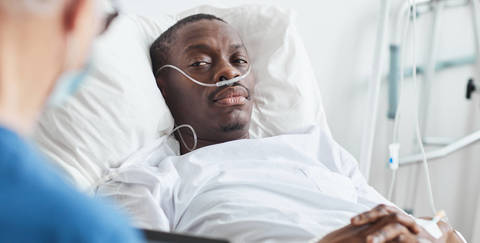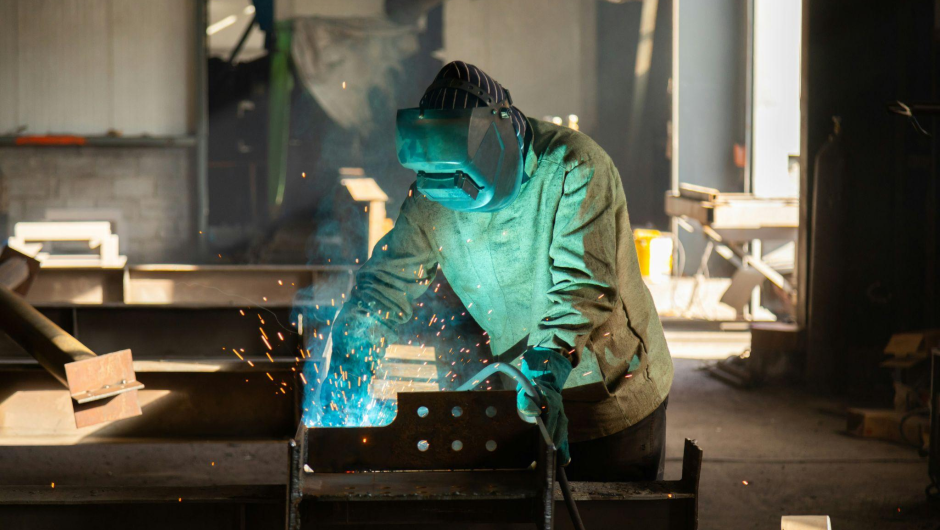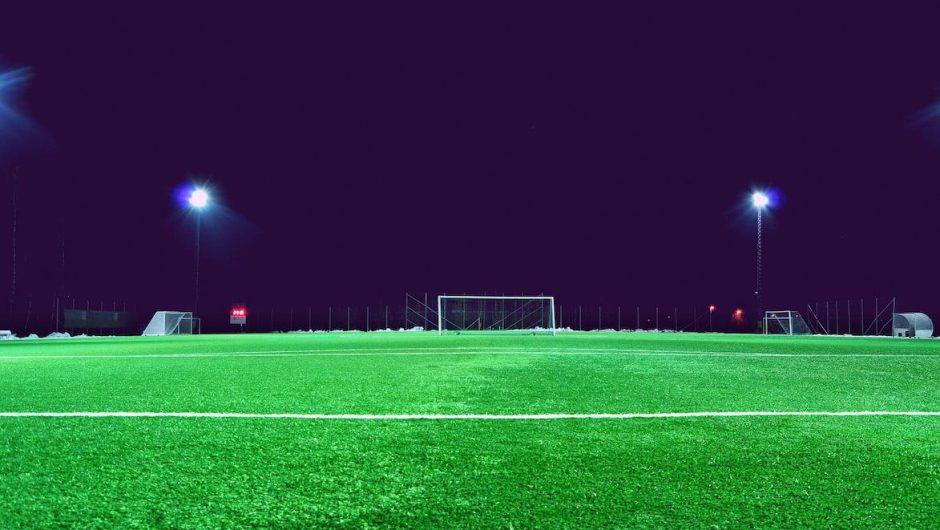The day before she received it, full of energy and with no doubts that anything was wrong, she drove 50 miles into the new neighborhood.
Laporte’s experience with difficult access to specialists, as well as primary care physicians, behind the COVID-19 pandemic is becoming a common scenario. Yesterday we wrote about the state of the health service in Great Britain, where the waiting list for treatment reaches nearly 6 million people. Is it the same in the US? One thing is for sure. In the United States, there is a marked decrease in the number of cancer screening tests being performed, and unfortunately, more and more oncological diseases are being diagnosed. Therefore, the common denominator between these two countries is a desperate attempt to regain the time lost by the epidemic.
This, in turn, is also linked to combating health inequalities. US doctors fear that delays in screening could have an even greater impact on African-American communities, exacerbating troubling disparities in health care that existed long before the pandemic.
A study published this month in the Journal of Preventive Medicine found that in April 2020, the total number of breast and cervical cancer screenings funded by the US Centers for Disease Control and Prevention decreased by 87% and 84%, respectively, compared to the last. five years. The researchers noted that the largest decrease was seen among women of all races. In April 2020, the number of screening tests taken fell 84% among Hispanic women, 98% among Alaskan Native women, 90% among African Americans and 97% among Asians.
Screening tests began to return to normal in May 2020. Through June, their number was nearly 40% less than the five-year average this month.
The pandemic has left its mark in two ways, said Laura Makarov, vice president of prevention and early detection for the American Cancer Society. First, at the beginning of the epidemic, we saw a sharp drop in the number of tests performed to detect cancer. Now we are struggling with arrears.” – she said. The second looming problem is access to health care, affected by employment and health insurance. Communities that have been affected by unemployment during the pandemic and have lost employer-guaranteed insurance have difficulty, if not impossible today, to doctors .
A study published last year by the American Society of Clinical Oncology found that two-thirds of Americans, nearly 64%, have delayed or missed scheduled tests — such as a mammogram, colonoscopy or HPV test. The reason for this decision was, of course, the epidemic.
Data from the US Centers for Disease Control and Prevention shows that blacks and Hispanics are at least twice as likely to die from COVID-19 than Caucasians and nearly three times as likely to be hospitalized. And these differences don’t just apply to Covid.
According to the American Cancer Society, African Americans have a 9% higher incidence of cancer and a 22% higher mortality rate than Caucasian men. By contrast, African American women have a 7% lower risk of developing cancer than Caucasian women, but are 13% more likely to die from cancer.
Source: CNN
$(function() {
$(window).resize(function() {
if(this.resizeTO) {
clearTimeout(this.resizeTO);
}
this.resizeTO = setTimeout(function() {
$(this).trigger("resizeEnd");
}, 500);
});
$(window).on("load", function() {
prepareAdv();
});
$(window).bind("resizeEnd", function() {
prepareAdv();
});
function prepareAdv() {
// usuwanie reklam, które nie są dla takich ekranów jak użytkownika
$(".adv-sidebar").each(function(){
var from = parseInt($(this).data("from"));
var to = parseInt($(this).data("to"));
var browser_width = $(window).width();
if (!isNaN(from) && !isNaN(to)) {
if ( !(browser_width >= from && browser_width <= to) ) {
$(this).addClass("removed");
}
}
});
}
});
jQuery.fn.kvDatepicker.dates={};
jQuery&&jQuery.pjax&&(jQuery.pjax.defaults.maxCacheLength=0);
if (jQuery('#616a0d33e522b').data('kvDatepicker')) { jQuery('#616a0d33e522b').kvDatepicker('destroy'); }
jQuery('#616a0d33e522b-kvdate').kvDatepicker(kvDatepicker_6eae9a30);
initDPAddon('616a0d33e522b');
if (jQuery('#event-time_start').data('timepicker')) { jQuery('#event-time_start').timepicker('destroy'); }
jQuery('#event-time_start').timepicker(timepicker_4254f8c1);
CKEDITOR.replace('616a0d33e5b57', {"height":200,"toolbarGroups":[{"name":"undo"},{"name":"basicstyles","groups":["basicstyles","cleanup"]},{"name":"colors"},{"name":"links","groups":["links","insert"]},{"name":"others","groups":["others","about"]}],"removeButtons":"Subscript,Superscript,Flash,Table,HorizontalRule,Smiley,SpecialChar,PageBreak,Iframe","removePlugins":"elementspath","resize_enabled":false});
dosamigos.ckEditorWidget.registerOnChangeHandler('616a0d33e5b57');
jQuery('#w0').yiiActiveForm([{"id":"event-online","name":"online","container":".field-event-online","input":"#event-online","enableAjaxValidation":true,"validate":function (attribute, value, messages, deferred, $form) {yii.validation.number(value, messages, {"pattern":/^s*[+-]?d+s*$/,"message":"Wydarzenie on-line musi być liczbą całkowitą.","skipOnEmpty":1});}},{"id":"event-name","name":"name","container":".field-event-name","input":"#event-name","enableAjaxValidation":true,"validate":function (attribute, value, messages, deferred, $form) {yii.validation.required(value, messages, {"message":"Wydarzenie nie może pozostać bez wartości."});yii.validation.string(value, messages, {"message":"Wydarzenie musi być tekstem.","max":255,"tooLong":"Wydarzenie musi zawierać nie więcej niż 255 znaków.","skipOnEmpty":1});}},{"id":"event-date_start","name":"date_start","container":".field-616a0d33e522b","input":"#616a0d33e522b","enableAjaxValidation":true,"validate":function (attribute, value, messages, deferred, $form) {yii.validation.required(value, messages, {"message":"Data rozpoczęcia nie może pozostać bez wartości."});}},{"id":"event-time_start","name":"time_start","container":".field-event-time_start","input":"#event-time_start","enableAjaxValidation":true},{"id":"event-event_days","name":"event_days","container":".field-event-event_days","input":"#event-event_days","enableAjaxValidation":true,"validate":function (attribute, value, messages, deferred, $form) {yii.validation.number(value, messages, {"pattern":/^s*[+-]?d+s*$/,"message":"Ile trwa wydarzenie (liczba dni) musi być liczbą całkowitą.","skipOnEmpty":1});}},{"id":"event-address_name","name":"address_name","container":".field-event-address_name","input":"#event-address_name","enableAjaxValidation":true,"validate":function (attribute, value, messages, deferred, $form) {yii.validation.string(value, messages, {"message":"Miejsce wydarzenia (nazwa obiektu) musi być tekstem.","max":255,"tooLong":"Miejsce wydarzenia (nazwa obiektu) musi zawierać nie więcej niż 255 znaków.","skipOnEmpty":1});}},{"id":"event-street","name":"street","container":".field-event-street","input":"#event-street","enableAjaxValidation":true,"validate":function (attribute, value, messages, deferred, $form) {yii.validation.string(value, messages, {"message":"Ulica musi być tekstem.","max":255,"tooLong":"Ulica musi zawierać nie więcej niż 255 znaków.","skipOnEmpty":1});}},{"id":"event-city","name":"city","container":".field-event-city","input":"#event-city","enableAjaxValidation":true,"validate":function (attribute, value, messages, deferred, $form) {yii.validation.string(value, messages, {"message":"Miasto musi być tekstem.","max":255,"tooLong":"Miasto musi zawierać nie więcej niż 255 znaków.","skipOnEmpty":1});}},{"id":"event-organizer","name":"organizer","container":".field-event-organizer","input":"#event-organizer","enableAjaxValidation":true,"validate":function (attribute, value, messages, deferred, $form) {yii.validation.string(value, messages, {"message":"Organizator musi być tekstem.","max":255,"tooLong":"Organizator musi zawierać nie więcej niż 255 znaków.","skipOnEmpty":1});}},{"id":"event-organizer_contact","name":"organizer_contact","container":".field-event-organizer_contact","input":"#event-organizer_contact","enableAjaxValidation":true,"validate":function (attribute, value, messages, deferred, $form) {yii.validation.string(value, messages, {"message":"Kontak do organizatora musi być tekstem.","max":255,"tooLong":"Kontak do organizatora musi zawierać nie więcej niż 255 znaków.","skipOnEmpty":1});}},{"id":"event-event_url","name":"event_url","container":".field-event-event_url","input":"#event-event_url","enableAjaxValidation":true,"validate":function (attribute, value, messages, deferred, $form) {yii.validation.string(value, messages, {"message":"Link do strony z wydarzeniem musi być tekstem.","max":255,"tooLong":"Link do strony z wydarzeniem musi zawierać nie więcej niż 255 znaków.","skipOnEmpty":1});}},{"id":"event-description","name":"description","container":".field-616a0d33e5b57","input":"#616a0d33e5b57","enableAjaxValidation":true,"validate":function (attribute, value, messages, deferred, $form) {yii.validation.string(value, messages, {"message":"Szczegóły musi być tekstem.","skipOnEmpty":1});}},{"id":"event-author_mail","name":"author_mail","container":".field-event-author_mail","input":"#event-author_mail","enableAjaxValidation":true,"validate":function (attribute, value, messages, deferred, $form) {yii.validation.required(value, messages, {"message":"Email osoby wpisującej ogłoszenie (nie będzie publicznie widoczny) nie może pozostać bez wartości."});yii.validation.email(value, messages, {"pattern":/^[a-zA-Z0-9!#$%&'*+/=?^_`{|}~-]+(?:.[a-zA-Z0-9!#$%&'*+/=?^_`{|}~-]+)*@(?:[a-zA-Z0-9](?:[a-zA-Z0-9-]*[a-zA-Z0-9])?.)+[a-zA-Z0-9](?:[a-zA-Z0-9-]*[a-zA-Z0-9])?$/,"fullPattern":/^[^@]*<[a-zA-Z0-9!#$%&'*+/=?^_`{|}~-]+(?:.[a-zA-Z0-9!#$%&'*+/=?^_`{|}~-]+)*@(?:[a-zA-Z0-9](?:[a-zA-Z0-9-]*[a-zA-Z0-9])?.)+[a-zA-Z0-9](?:[a-zA-Z0-9-]*[a-zA-Z0-9])?>$/,"allowName":false,"message":"Email osoby wpisującej ogłoszenie (nie będzie publicznie widoczny) nie zawiera prawidłowego adresu email.","enableIDN":false,"skipOnEmpty":1});yii.validation.string(value, messages, {"message":"Email osoby wpisującej ogłoszenie (nie będzie publicznie widoczny) musi być tekstem.","max":255,"tooLong":"Email osoby wpisującej ogłoszenie (nie będzie publicznie widoczny) musi zawierać nie więcej niż 255 znaków.","skipOnEmpty":1});}}], {"validationUrl":"/calendar-event/validate"});
jQuery('#event_calendar_modal').modal({"show":false});
CKEDITOR.on('dialogDefinition', function ( ev ){
if(ev.data.name == 'link'){
ev.data.definition.removeContents('target');
}
});
CKEDITOR.plugins.link.getLinkAttributes = function(editor, data){
return {
// Attributes to be set.
set: {
href: data.url.protocol + data.url.url,
target: '_blank'
},
// Attributes to be removed.
removed: [
'id', 'style'
]
};
};
// bootrapowy modal przyslanial okienko do wpisania linku
$.fn.modal.Constructor.prototype.enforceFocus = function () {
var $modalElement = this.$element;
$(document).on("focusin.modal", function (e) {
var $parent = $(e.target.parentNode);
if ($modalElement[0] !== e.target && !$modalElement.has(e.target).length
// add whatever conditions you need here:
&&
!$parent.hasClass("cke_dialog_ui_input_select") && !$parent.hasClass("cke_dialog_ui_input_text")) {
$modalElement.focus();
}
})
};
function onlineEvent(e) {
let el = $(e.currentTarget);
let checked = el.prop('checked');
$('.stationary-event').prop('disabled', checked)
}
$(document).on('change', '#event-online', onlineEvent);
jQuery('#w1').tab();
jQuery('#cookie-info').alert();
});
“Proud creator. Amateur music junkie. Tv scholar. Web fan. Lifelong alcohol lover. Falls down a lot. Hardcore thinker.”








